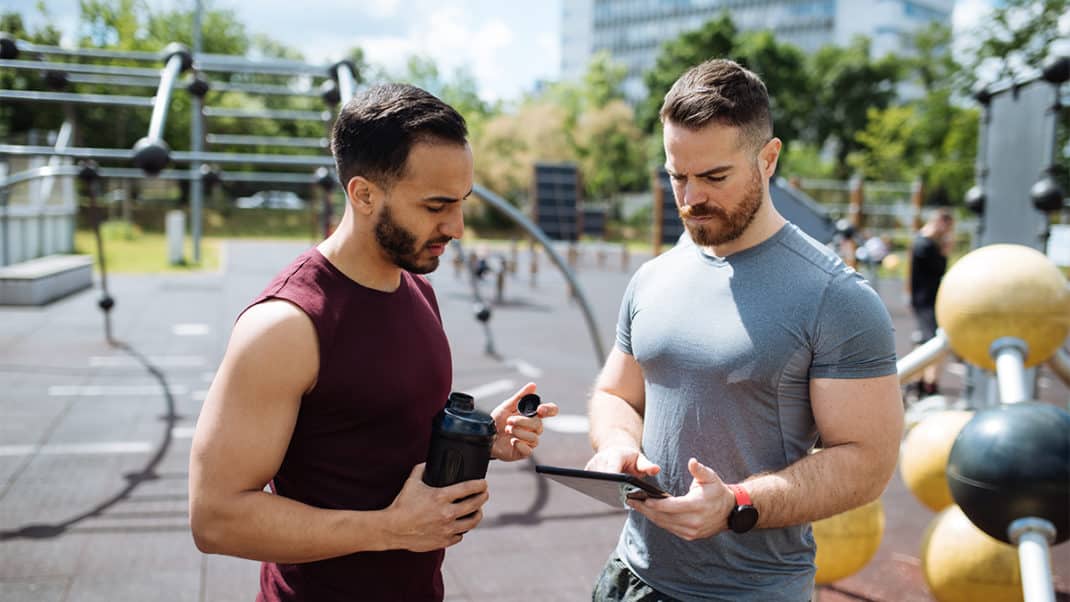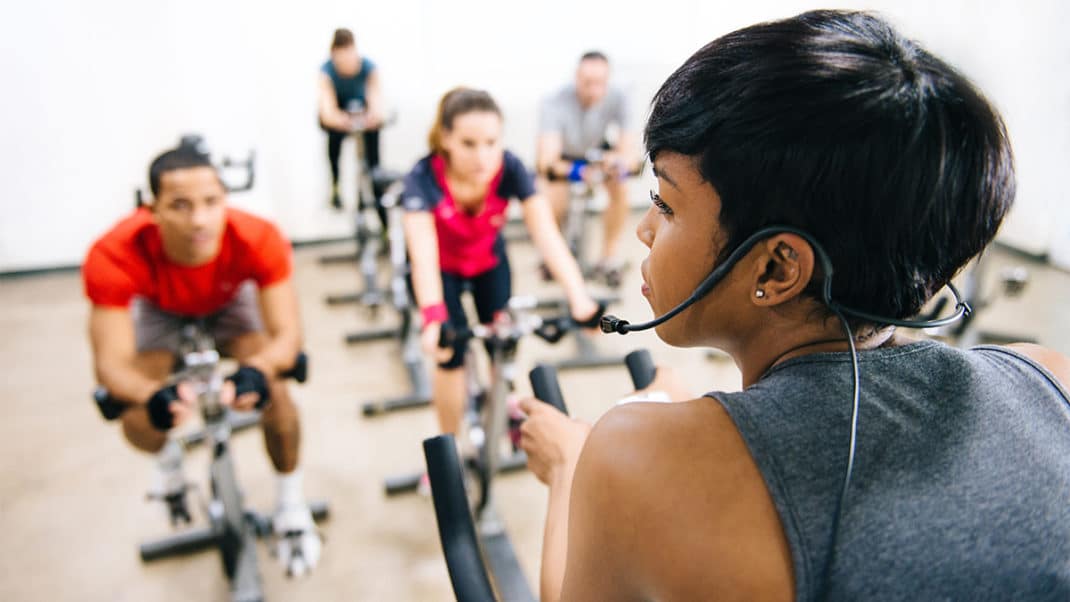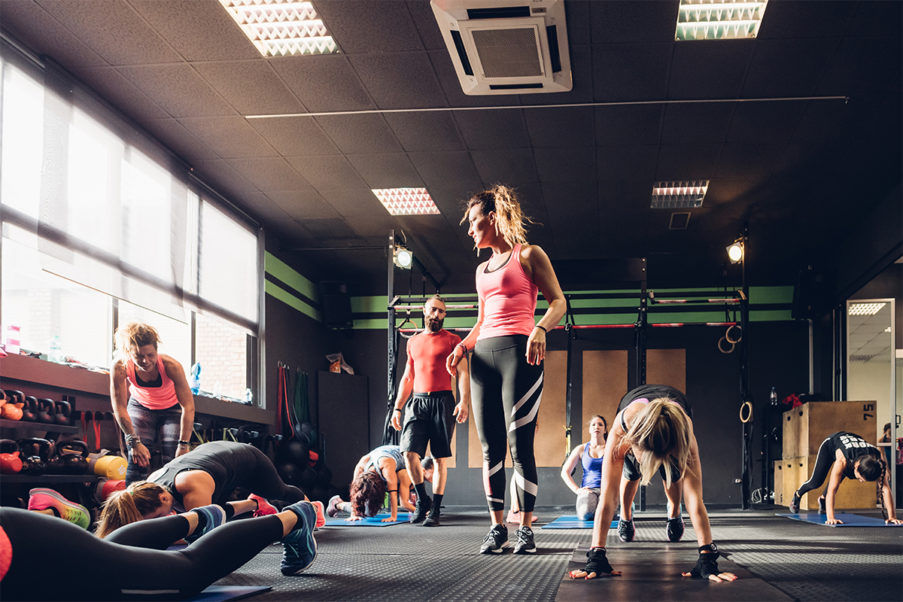Big Bang Exercises
Your participants rush to the gym in the early morning,
during their lunch hour or after work, desperately trying to stay fit, keep the fat off or simply feel better about their bodies. Pressed for time and wanting results, many exercisers are after something new—an exercise that delivers more or is better than other exercises.
As a fitness instructor, you will find it much easier to fill your classes if your participants achieve better results than people who don’t take your workouts. But how can your participants achieve superior results? This is where my concept of the “Big Bang” exercise can be helpful, both to you and to your exercisers. Big Bang conjures up thoughts of getting the most for your time or money, or beginning something new and grand, and this is exactly what
exercisers want!
The Big Bang concept signifies any exercise that:
1. meets the characteristics of a functional exercise
2. uses numerous biomotor abilities simultaneously
The more biomotor abilities, movement planes and functional-exercise characteristics an exercise addresses,
the more of a Big Bang exercise it is. To better understand this concept, let’s first review the characteristics that make an exercise functional.
Characteristics of
Functional Exercises
Reflex Profile. When we perform a physical activity, our nervous system is constantly activating reflexes in our postural muscles to keep us upright and orient our bodies in space. For example, when we move across a fixed surface, such as a step or balance beam, we use our righting reflexes. When we are on a surface that moves under us, such as
a skateboard or a stability ball during certain exercises, we maintain our balance using our equilibrium reflexes. Functional exercises should activate the same reflexes clients will use when performing the particular functional movements or activities they are training to improve.
Center of Gravity. Our center of gravity shifts any time we move our body or extremities relative to our base of support. If our center of gravity goes outside our base of support, we are more likely to fall. For example, if someone were to toss you a 10-pound medicine ball and you had to reach outside the space occupied by your feet in order to catch it, the weight of the ball could shift your center of gravity so far outside your base of support that the weight and inertial energy of the ball could pull you over. Since our center of gravity must be maintained over our base of support during most of the functional activities we perform, functional exercises should be designed to keep your clients’ center of gravity over their base of support.
Motor Skills. When we perform an exercise, we are learning a skill. For this skill to transfer to a functional activity, the exercise must have movement qualities similar to those required during the activity. For example, a squat and a vertical jump have very similar movement characteristics, which is why squatting is so helpful in improving the vertical jump. On the contrary, knee extensions and hamstring curls are such isolated movements that they have a negligible effect on improving vertical- jump performance. Functional exercises should require the same motor skills as the functional movements or activities your clients wish to perform better.
Open- vs. Closed-Chain Compatibility. In an open-chain exercise, the distal (or working) segment moves freely against the resistance. A bench press is open because the weight is pressed up and off the body. In a closed-chain exercise, the distal segment is fixed and cannot overcome the resistance. A push-up is closed because you cannot push the ground away from your body. When selecting functional exercises, consider whether the activities clients are training for involve open- or closed-chain function. For example, to improve an athlete’s ability to quickly get up from the ground, the push-up would be a better choice than the bench press because getting up from the ground is a closed-chain activity.
Characteristics of
Big Bang Exercises
Big Bang exercises, like functional exercises, address more biomotor abilities and use more planes of movement than many traditional exercises. The term “biomotor” (bio meaning life and motor meaning movement) refers to a number of movement abilities people can use. As shown in the table “Big Bang Exercises vs. Traditional Exercises” on page 9, you can develop a biomotor profile for virtually any activity. For example, the leg press does not require balance, agility, coordination or a high degree of flexibility, but it may require strength or endurance. On the other hand, the Cross Box Step-Up (see Figure 1) requires balance, coordination, agility, flexibility, strength and endurance. This exercise would therefore be a good one to choose for a client needing to train for a hiking trip.
By my definition, the more functional-exercise characteristics a given exercise addresses, the more it is a Big Bang exercise. In the table below, I compare three traditional exercises to two Big Bang exercises and, using a point system,
assign one point for each characteristic that improves the exerciser’s functional capability. A quick glance at the table demonstrates the tremendous return on a Big Bang investment.
The Cross Box Step-Up
The Cross Box Step-Up (shown in Figure 1) is a functional exercise requiring motion in several planes of movement. The tempo can be slow, moderate or fast, and the exercise can be performed with or without weights. Initially, the outside foot (the right foot in the figure) is on the step. To protect knee structures, the shin angle should never be greater than 30 degrees relative to vertical. As you step up, step the left leg across to the opposite side of the step. Then step down with the right leg, making sure the knee angle of the leg remaining on the step is no greater than 30 degrees. When both feet are on the ground, repeat this exercise in the opposite direction.
When performed using heavy loads, the Cross Box Step-Up is great for building strength. With lighter loads, the exercise can be used to develop power or muscular endurance. The number of repetitions and the intensity should be dictated by the exerciser’s ability to hold good form.
The Supine Lateral Ball Roll
Besides the attributes listed in “Big Bang Exercises vs. Traditional Exercises” (page 9), the Supine Lateral Ball Roll (shown in Figure 2) is an excellent exercise for improving spinal stability, posture, balance and coordination. Because this exercise requires that you hold yourself against gravity supported largely by one shoulder, there is tremendous activation of each extensor muscle from your hamstrings to the base of your skull. In fact, the Supine Lateral Ball Roll activates the extensor muscles so strongly that it is also excellent for postural conditioning (once the exerciser can maintain good form). Additionally, the deep abdominal muscles, multifidus muscles of the spine, cervical flexors and hip stabilizers play a critical role in maintaining proper position on the ball, so these commonly weak muscles receive excellent conditioning. And since the exercise is performed on a stability ball, the user develops the necessary coordination and balance to stay on top of the ball. As your class participants improve their balance, strength and coordination, they will be able
to roll farther laterally or hold the end position for a longer period of time
and with good form.
To perform this exercise correctly, place the shoulders and head comfortably on the stability ball. Arms are outstretched with palms up. Hips are elevated until the torso is parallel to the floor. Begin the exercise by shuffling laterally with the feet and letting the body follow. As you can see in Figure 2, the exerciser is suspending herself from the right shoulder with significant extension force required from the left hip. Once you have rolled laterally as far as you can go and can hold good form for a count of one to three seconds, you can roll across the ball and repeat the same exercise on the opposite side.
Performing a one- to three-second hold on each side constitutes one full repetition. A stick or unweighted barbell placed across the pelvis remains level to the floor during the hold phase of the exercise. To assist your participants, have them imagine that a stick placed in the palms of the hands and across the front of the pelvis is an airplane wing. Then cue participants to keep the airplane flying level once they are in the hold position. A typical set using a one-second hold would include eight to 12 repetitions. The intensity, or effort, required to perform the exercise is dictated by how far clients can roll laterally. As the number of prescribed reps increases, the intensity or amount of lateral deviation off the center of the ball must be reduced; otherwise form is likely to deteriorate.
These exercises work well within several class formats: circuits, abs routines, stability ball classes and strength or balance training classes. If you use the Supine Lateral Ball Roll in a circuit, make the exercise one of the first stations, since it places significant neural demand on the body. (The same goes for other Big Bang exercises: Because of their complexity, include them early in your classes when exercisers are fresh.)
The Cross Box Step-Up and Supine Lateral Ball Roll are just two of the many time-efficient, effective Big Bang exercises that can help your participants reach their fitness or functional movement goals. And just maybe those people not taking your classes will change their minds and come to check out what you have to offer!
Paul Chek
Paul Chek has produced more than 50 videos and correspondence courses designed to help fitness professionals train exercisers more efficiently and effectively. To learn more about him and other Big Bang exercises, or to request a free C.H.E.K Institute product catalog, visit www.chekinstitute.com or call the C.H.E.K Institute at (800) 552-8789 in the U.S., (800) 552-8789 in New Zealand and Australia or +44-20-8874-6942 in the United Kingdom.






